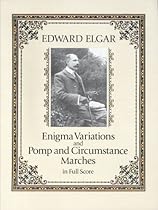

To orchestrate is to create; and this cannot be taught; wrote Nikolay Rimsky-Korsakov; the great Russian composer whose genius for brilliant; highly colored orchestration is unsurpassed. But invention; in all art; is closely allied to technique; and technique can be taught. This book; therefore; which differs from most other texts on the subject because of its tremendous wealth of musical examples and its systematic arrangement of material according to each constituent of the orchestra; will undoubtedly be of value to any music student. It is a music classic; perhaps the only book on classical orchestration written by a major composer.In it; the composer aims to provide the reader with the fundamental principles of modern orchestration from the standpoint of brilliance and imagination; and he devotes considerable space to the study of tonal resonance and orchestral combination. In his course; he demonstrates such things as how to produce a good-sounding chord of certain tone-quality; uniformly distributed; how to detach a melody from its harmonic setting; correct progression of parts; and other similar problems.The first chapter is a general review of orchestral groups; with an instrument-by-instrument breakdown and material on such technical questions as fingering; range; emission of sound; etc. There follows two chapters on melody and harmony in strings; winds; brasses; and combined groups. Chapter IV; Composition of the Orchestra; covers different ways of orchestrating the same music; effects that can be achieved with full tutti; tutti in winds; tutti pizzicato; soli in the strings; etc.; chords; progressions; and so on. The last two chapters deal with opera and include discussion of solo and choral accompaniment; instruments on stage or in the wings; technical terms; soloists (range; register; vocalization; vowels; etc.); voices in combination; and choral singing. Immediately following this text are some 330 pages of musical examples drawn from "Sheherazade;" the "Antar Symphony;" "Capriccio Espagnol;" "Sadko;" "Ivan the Terrible;" "Le Coq dOr;" "Mlada;" "The Tsars Bride;" and others of Rimsky-Korsakovs works. These excerpts are all referred to in the text itself; where they illustrate; far better than words; particular points of theory and actual musical practice. They are largely responsible for making this book the very special (and very useful) publication it is.This single-volume edition also includes a brief preface by the editor and extracts from Rimsky-Korsakovs 1891 draft and final versions of his own preface; as well as an appendixed chart of single tutti chords in the composers works.
#2973898 in eBooks 2013-09-19 2013-08-22File Name: B00DGBMD6Y
Review
0 of 0 people found the following review helpful. good read; philosophically challengingBy editor 284Interesting book; with new angles on important artists and works. Connects to the discussion in art- criticism; environmentalism and contemporary philosophy in a useful and nuanced way.0 of 0 people found the following review helpful. On the rich eco-art trackBy GOn the right track... less polemical more relevant than other books on this subject